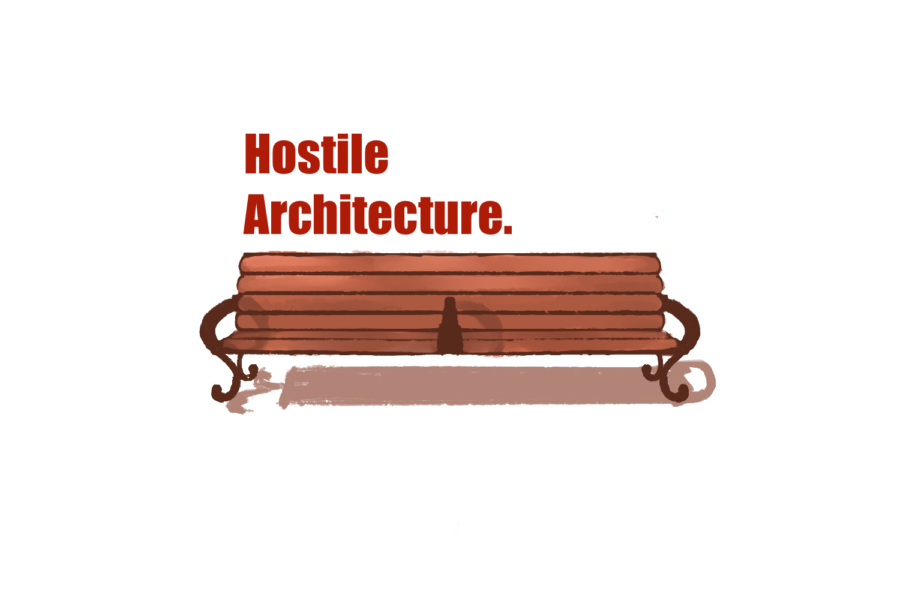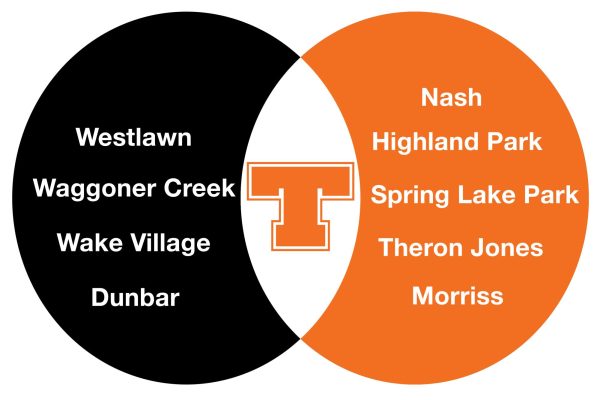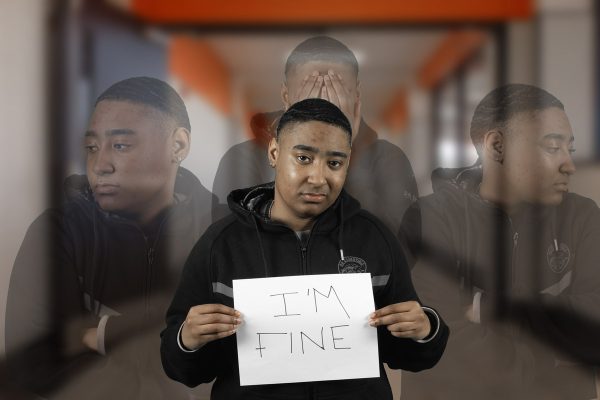We don’t want you
Hostile architecture harms the disadvantaged
October 28, 2021
Spikes on benches and sidewalks, sharp, jagged rocks scattered on bridges, benches cut in half, all of which exist in the world we live in. It sounds like something from a horror movie, seats and floors designed to be as uncomfortable as possible. Why would someone create such a thing?
It’s called hostile architecture, a type of architecture that is designed to limit unlawful behaviors and stop certain people from using public spaces in inappropriate ways. The idea isn’t new and has been circling around since 19th century England. However, in the last few years it has become more widely used in several countries, and has begun to take a dark and political turn.
The designs have begun to specifically target the homeless and individuals with disabilities and has made it difficult for them to use public spaces. By using these designs, cities are telling these groups of people that they don’t want them there. That they don’t care about them; they just want them out of eyesight.
The designs can deny people a place to sleep and coverage from rain, snow and other difficult weather. The furnishing stops them from getting sleep and for just a few hours in the day. They make life an even harder challenge for people who already have a hard life.
It pushes past just furniture as well. Some cities have gone as far as cutting down trees so people can’t even get a little bit of shade in the blazing heat, which can be dangerous in the hot summer months. There have also been cases of grates being surrounded by tall metal fences to stop people from huddling around them to get warm in the freezing winter.
Of course, there are always shelters people can go to, but homeless shelters aren’t always a safe haven for people. There can be many issues that drive people away. Shelters tend to lack a sense of privacy, take away people’s autonomy over their decisions and time and can be discriminatory towards disabled and non-religious people.
Disabled people also feel the effects of the architecture as some of the designs have made it harder to access certain areas and made it difficult to get around. The uneven ground of some ideas make it difficult for wheelchair and mobility scooter users to get around. The tight spaced and oddly designed seats can cause issues as well and cause a restriction on who can sit there.
Public spaces are for the public no matter who they are. Driving people away with spikes and sectioned seats doesn’t get rid of or help these people. These abstract furniture designs are just the curtain that hides the growing problem of homelessness and lack of accessibility. They don’t help, and with their presence, we only grow further from assisting each other during tough times.





















